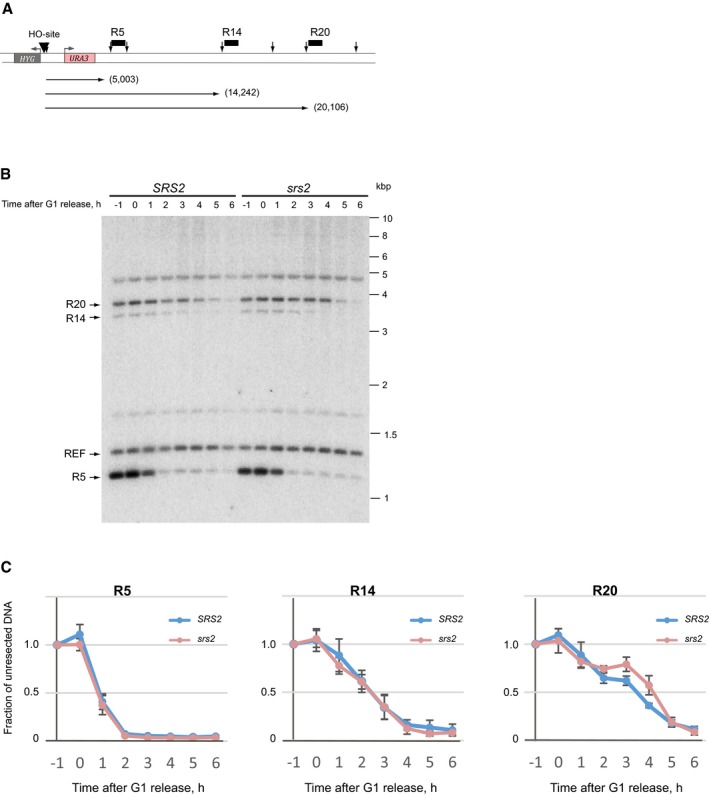Schematic of unrepairable DSB used for comparative analysis of break resection in (B and C). HO recognition site is shown by black triangle, vertical arrows represent
BglII restriction sites, and horizontal arrows depict distance (in bp, shown in brackets) from DSB to the three
BglII restriction fragments monitored by Southern hybridization using the corresponding probes (black boxes labelled R5, R14 and R20). Notice, the DNA on the right hand side of the break is identical to that used in SSA assays (Fig
4A), while on the left,
ura3‐52–KAN was replaced by
HYG, thereby removing homology required for DSB repair by SSA.

